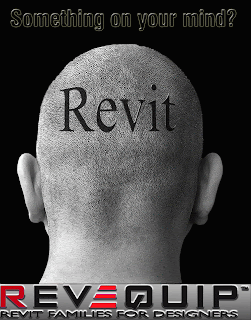Identity and function is the name of the game with symbols. A sign; a pointing towards another object, process, or location somewhere in the context of the plan. A really good symbol is the one that is the most broadly understood. And that can mean that it's been around for a while, easily recognized, positioned where there may be a question.
It takes many years to understand representations in the food service game. Templates were (and still are) a huge influence in the world of design. Transparent green floppy plastic with rectangles that represent booths, worktables, or any other common place object (not easily moved) in the food factory. Using a mechanical pencil they were accurate stencils that introduced us to the world of 1/4" or 1/2" scale (to name a couple common ones). Although they were poor physical representations of actual objects they were taken as symbols that had the same attributes and function of the thing itself.
Can a blank space be a symbol? In the design world it can be. It could be a masking, a placeholder for implied content; a dimensional region. For those of us that have grown up in food service design we are intuitively wired to understand the references. And for those that haven't they are left with the insecurity of not fully understanding the environment.
Or as my good friends say, "They couldn't read the gawd damn prints!"
It always helps to go to a site of a finished operation that is occupied with the objects, processes, and locations that the symbols represent. "Oh, that's what that round circle is." It isn't a symbol without them.
Of course the actual OPL's (objects, processes, location) are much better for understanding the functions and identity of the workplace itself. We now can print the 3D objects in miniature form out of various materials using printers controlled by powerful computer software. However, as accurate as they are the printed models never reveal the processes of the space. This is done with a presentation enveloped with language (some of which can be hard to understand).
As such, the understanding of the process is lost without it's host movement. The Chef turns 35 degrees, opens refrigerator door, takes out a vegetable, turns back, dices the vegetable, etc.
The point has been made that as professional food service consultants we need to have access to the 'best' symbols that are most easily understood by the non-consultants. (As Chef's they may have a great intuitive grasp of the processes but may not know much of the objects, or location (flow). Which is why a Chef can make an outstanding consultant and a great source for project interview in many cases.)
BIM (Building Information Modeling) is a powerful software solution to understanding the objects within a food service operation. Not only can BIM provide a near perfect representation of a physical object it can also show other requirements such as power requirements, processes, and movement.
You've probably guessed right my friends. Another pitch for BIM. Happy Holidays!
It takes many years to understand representations in the food service game. Templates were (and still are) a huge influence in the world of design. Transparent green floppy plastic with rectangles that represent booths, worktables, or any other common place object (not easily moved) in the food factory. Using a mechanical pencil they were accurate stencils that introduced us to the world of 1/4" or 1/2" scale (to name a couple common ones). Although they were poor physical representations of actual objects they were taken as symbols that had the same attributes and function of the thing itself.
Can a blank space be a symbol? In the design world it can be. It could be a masking, a placeholder for implied content; a dimensional region. For those of us that have grown up in food service design we are intuitively wired to understand the references. And for those that haven't they are left with the insecurity of not fully understanding the environment.
Or as my good friends say, "They couldn't read the gawd damn prints!"
It always helps to go to a site of a finished operation that is occupied with the objects, processes, and locations that the symbols represent. "Oh, that's what that round circle is." It isn't a symbol without them.
Of course the actual OPL's (objects, processes, location) are much better for understanding the functions and identity of the workplace itself. We now can print the 3D objects in miniature form out of various materials using printers controlled by powerful computer software. However, as accurate as they are the printed models never reveal the processes of the space. This is done with a presentation enveloped with language (some of which can be hard to understand).
As such, the understanding of the process is lost without it's host movement. The Chef turns 35 degrees, opens refrigerator door, takes out a vegetable, turns back, dices the vegetable, etc.
The point has been made that as professional food service consultants we need to have access to the 'best' symbols that are most easily understood by the non-consultants. (As Chef's they may have a great intuitive grasp of the processes but may not know much of the objects, or location (flow). Which is why a Chef can make an outstanding consultant and a great source for project interview in many cases.)
BIM (Building Information Modeling) is a powerful software solution to understanding the objects within a food service operation. Not only can BIM provide a near perfect representation of a physical object it can also show other requirements such as power requirements, processes, and movement.
You've probably guessed right my friends. Another pitch for BIM. Happy Holidays!


















